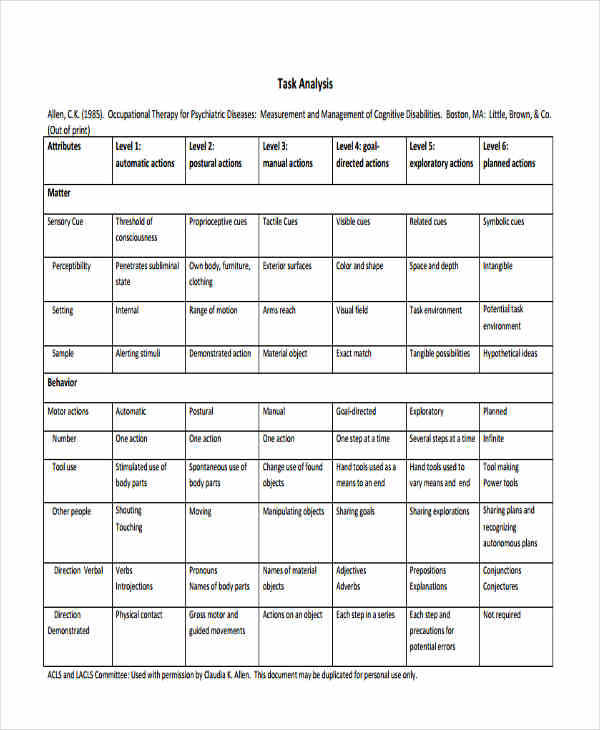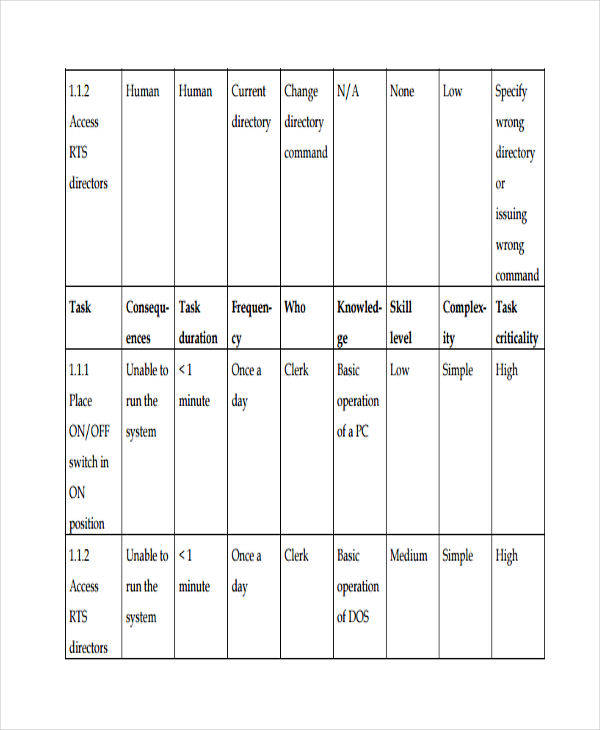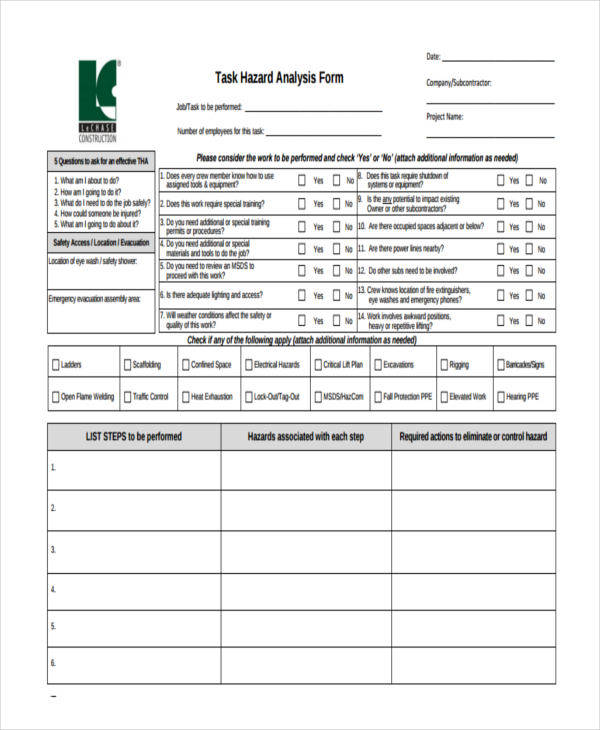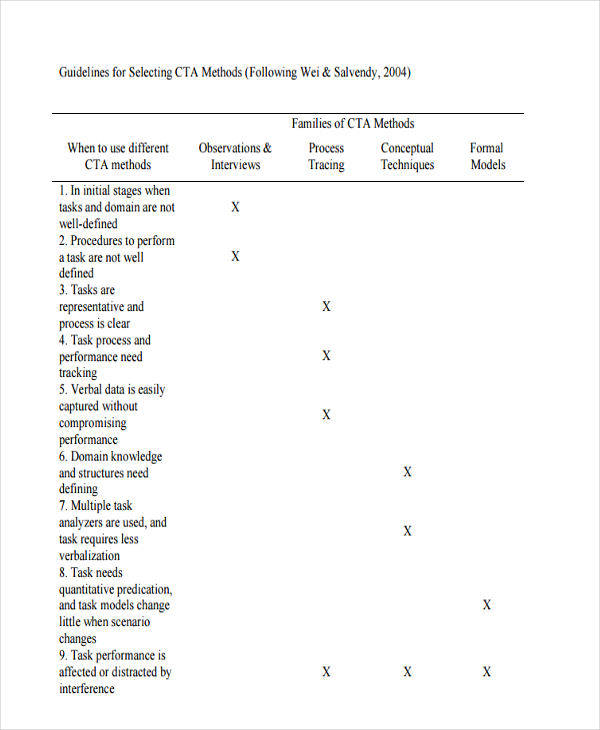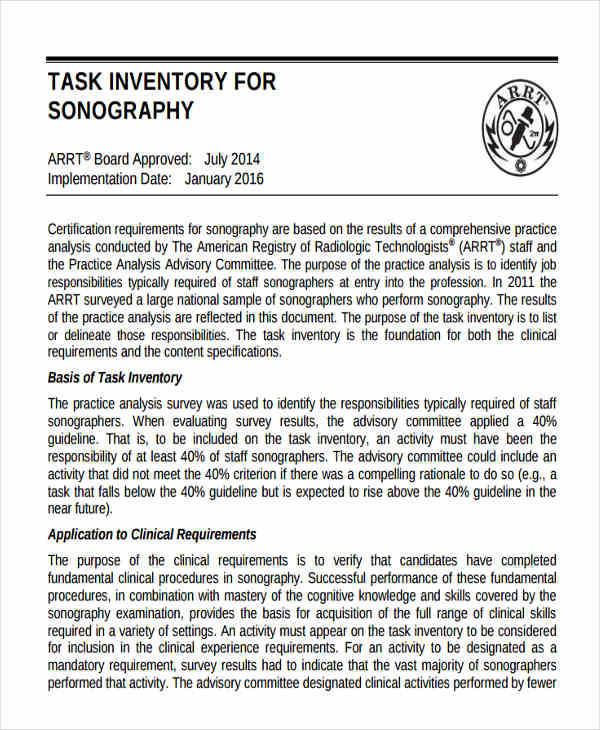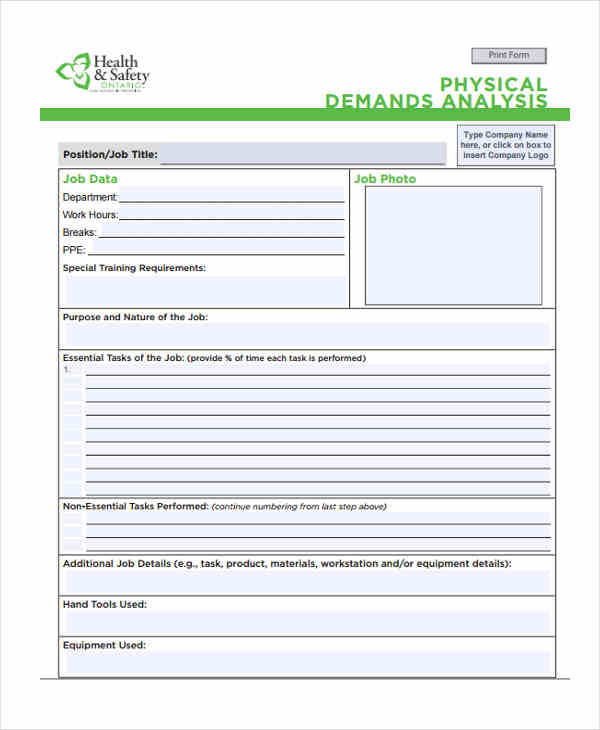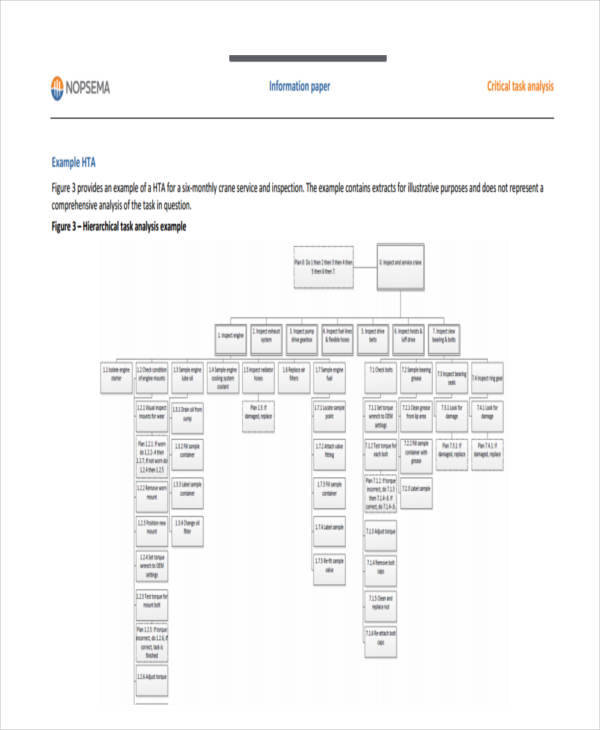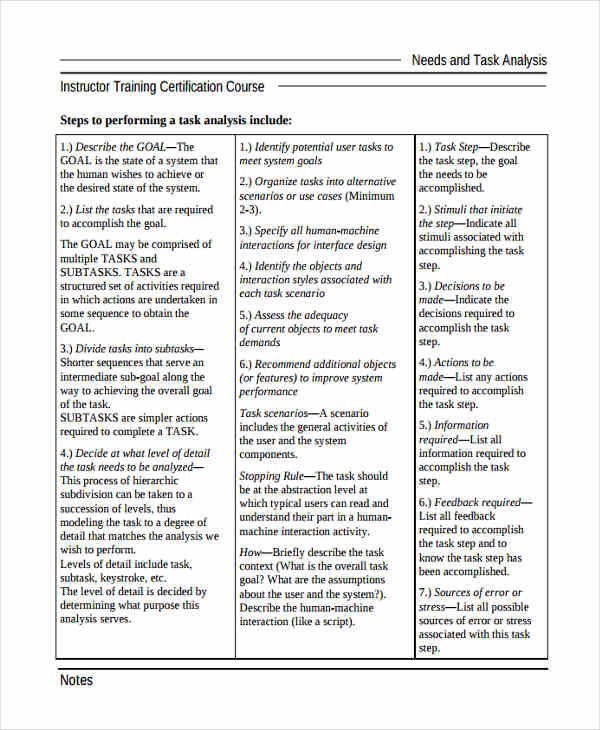A task analysis is basically a type of analysis writing used as a means of analyzing a person’s skills or abilities and segregating them into smaller, more manageable subtopics for the reader’s convenience. This type of analysis is commonly used by us humans in our daily lives. How, do you ask? Well, as humans, we are a species that have the ability to think before acting so as to gain the most benefits with the least effort.
Task Analysis Template
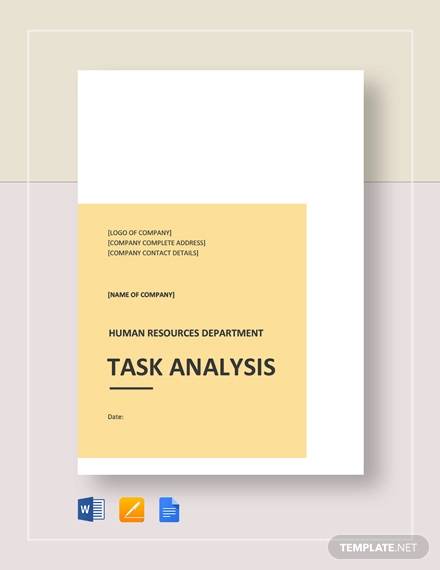
Sample Task Analysis Template
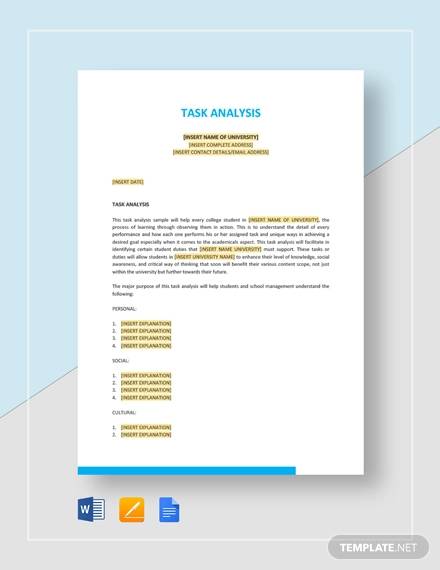
Sample Job Task Analysis Template
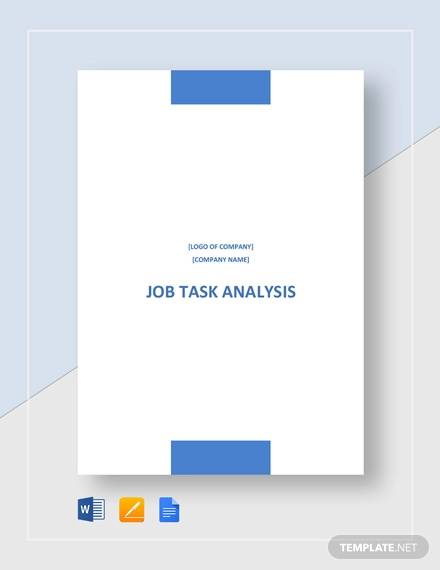
Task analysis is still just like a business analysis, because it implies critical thinking and some forms of logic into the way you will make an analysis. Aside from logic and critical thinking, analysis also requires access to immense amounts of information and data so as to be able to formulate the most effective or beneficial outcome possible.
Sample Time Task Analysis Template
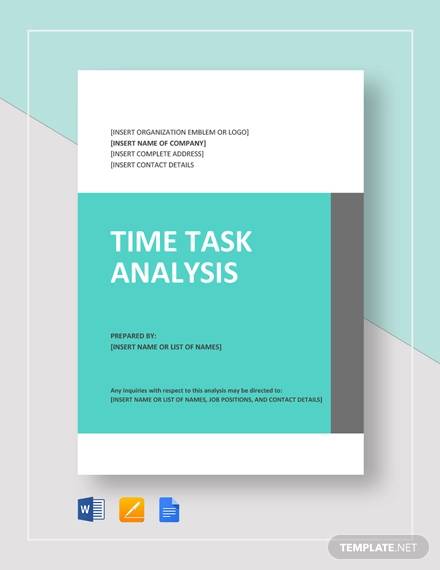
Maintenance Task Analysis
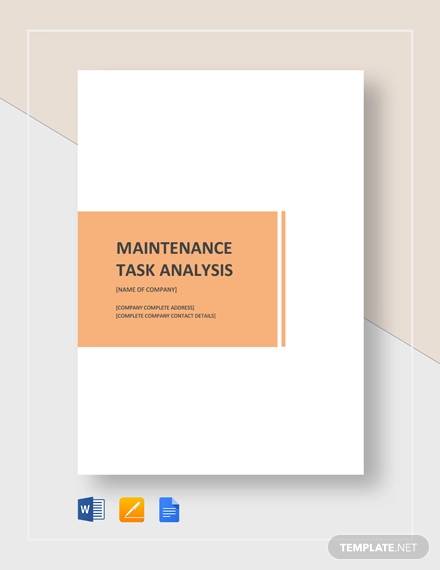
Job Task Analysis
Task Analysis Sample
Hierarchical Task Analysis
Task Hazard Analysis
Cognitive Task Analysis
Task Analysis Grid Sample
What Is a Task Analysis Used For?
The exact function of a task analysis would probably involve teaching someone or someone else learning something. Either way, a task analysis can be used as a means of breaking down information into a much more manageable size. Let’s take a job task analysis template and analyze the purpose of this type of task analysis.
- It is used as a means of dividing labor into a more manageable and easy-to-remember step-by-step instruction.
- It allows employers to train fresh employees on the ways to conduct business or to accomplish their assigned task.
Tips on How to Create a Task Analysis
Now that we figured out the definition of a task analysis and its importance, we need to know how to make one. Nothing beats a good task analysis example as a frame of reference, but we will be learning how to manually make a task analysis. To begin we need to:
- Identify the purpose of the task analysis, this way you know what to focus on.
- Break the main topic down to several sub-topics that will be much easier to explain.
- Analyze the subtopics and begin explaining each sub-topic.
Some analysis methods will require you to break the main topic into certain amounts. Let’s take a PEST analysis sample as a reference. A PEST analysis requires you to break the topic into four subtopics. These topics are political, economic, social, and technological factors.
Task Inventory Analysis
Maintenance Task Analysis
Task Demand Analysis
Critical Task Analysis
Task Needs Analysis
Advantages and Disadvantages of a Task Analysis
The single most obvious advantage a task analysis has would be the segregation of a large piece of information into smaller more manageable pieces, which makes it simpler to explain. The disadvantage, however, would be that it would take a much longer time to complete the analysis and will often have some outdated information.
An analysis in any form can be effective for preparing you or your company for any potential drawbacks and may lead you to a better outcome. Examples of these analyses would be the sample business analysis and the job analysis samples that can be found on this site.
Guidelines for Conducting a Cognitive Task Analysis
- Save time by using a cognitive task analysis template for the outline of the analysis.
- Identify and focus on the main topic and information only.
- Avoid using untrusted information.
- Always background check the information you have gathered.
Related Posts
8+ PEST Analysis Samples
9+ Business Needs Analysis Templates
22+ Task List Samples in PDF
14+ HR SWOT Analysis Samples & Templates
10+ SWOT Analysis of a College Samples
15+ Market Analysis
5+ Sample Financial Ratios Analysis
9+ Sample Performance Analysis Reports
10+ Certificate of Analysis Templates
10+ Time Tracking Templates
6+ Management List Samples
6+ Break Even Analysis
10+ Hospital SWOT Analysis Samples
8+ Task List Samples
8+ Sample Task List Templates


